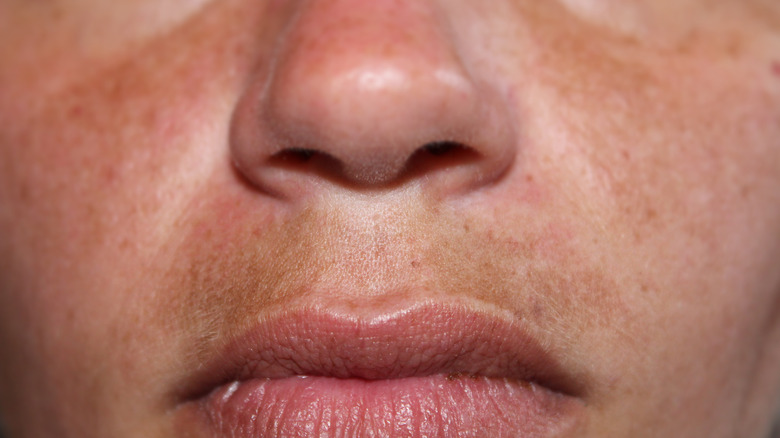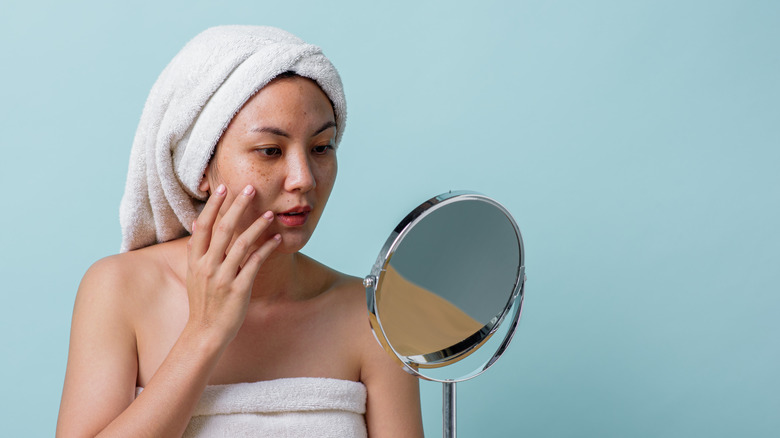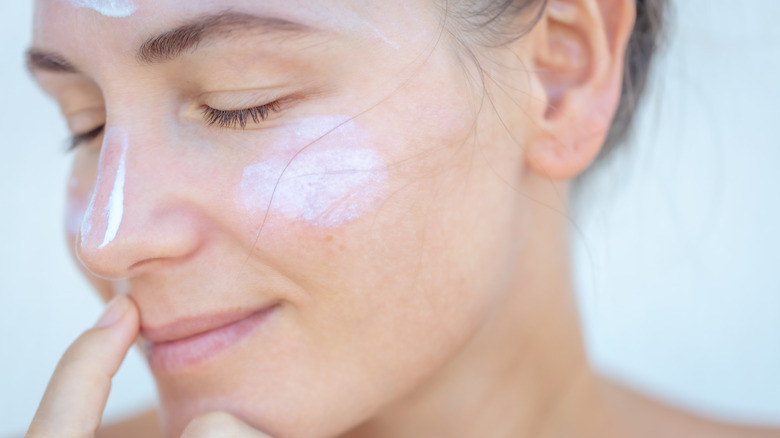Sun Mustache: Why Upper Lips Are Susceptible To Darkening (& What To Do About It)
Sun damage is something that plagues us as we age. Our skin experiences damage as a result of not using sun protection like hats and sunscreen while being out in the sun. We need sunshine in our lives and a dose of Vitamin D is good for us, but too much can really create significant skin damage. The sun can burn our skin to the point of blistering, make our skin irritated and itchy, and it can even create an unwanted darkening of our skin called melasma.
If you notice an uneven discoloring of your upper lip, it could be a sun mustache (or melasma) appearing. This is a common complaint of many people who enjoy the outdoors, and there are many questions that surround just why so many of us suffer from this discoloration. It turns out there is a very good reason for a sun mustache to appear, and there are just as many options to prevent melasma from making us self-conscious about our skin.
What is a sun mustache
If you notice a darker patch of skin above your upper lip, you may be experiencing something called a sun mustache. These darker spots are random and at times blotchy, and they occur where the skin is more sensitive. Sun mustaches affect thousands of people each year. Between 1.5% and 33% of people suffer from them, and it most commonly shows up in women in their reproductive years says Cleveland Clinic.
According to the American Academy of Dermatology, when skin is exposed to UV light, the body produces more pigment. Sometimes pigment shows up in the form of patches or freckle-like spots. This is melasma. Melasma can occur in anyone, but it's very common if someone else in your family suffers from it. Some studies have found that women struggle with melasma more than men, so hormones definitely play a part in the appearance of a sun mustache.
Why does it happen
While melasma is mostly caused by exposure to sunlight, it can also be triggered by pregnancy, stress, medications, or certain diseases. Because melasma is affected by hormones, when women are in their reproductive years, they notice darker splotches on their upper lips more frequently. Medications that make your skin more sensitive to sunlight include blood thinners, some antibiotics, and anti-seizure medications can allow sunlight to affect your skin even more than someone who isn't taking this medication (via American Academy of Dermatology). If you suffer from certain diseases like thyroid disease or high blood pressure, you are more susceptible to the effects of the sun. People who treat their thyroid disease often find success with clearing up their sun mustache.
In addition to hormones, medications, and diseases, melasma usually occurs in people who have a darker skin tone. Very rarely will those with light skin notice this collection of pigmentation on the upper lip. This is because those with medium to dark skin have more melanocytes than those with light skin, making them more susceptible to melasma (via Medical News Today).
Will your sun mustache go away
The good news is that just like temporary sun damage, melasma does typically fade in the winter months. If you live in a warmer climate where there is still outdoor fun to be had, make sure to protect your skin from the sun year-round (via Today). Skiers and snowboarders still need to use sunscreen and clothing with built-in SPF to make sure they are safe in the sun's elements. If you are from a warmer climate, your sun mustache could last much longer throughout the year.
MD Acne explains that the sun mustache is best treated with a medicated skin cleanser with BHA because it provides a sort of acidic removal of the dark spots. A mixture of Arbutin, retinol, and Beta hydroxy acids helps all skin types and colors. With treatments such as these, you can prevent the sun mustache as well as weaken its appearance.
How to prevent a sun mustache
The best way to treat a sun mustache is to prevent it in the first place. Using products like retinol and Arbutin are wonderful ways to take care of your skin. In addition, sunscreen is essential for all of our skin, but our faces should take priority. The reason we have such an issue with melasma above the lip is because the area where it shows up is near our mouth. Every time we drink, eat, wipe our face, or blow our nose, we are likely removing the protection we've applied. Don't be afraid to reapply sunscreen to the areas that get wiped off while you are out in the sun.
In addition to skin products, try to limit the time that your skin is exposed to the sun. Also, stay away from tanning beds, wear a hat, and look for sunscreen products that contain zinc oxide or titanium oxide for prevention. Reapply at least every two hours for ultimate protection.
Treatments to avoid
Just as there are treatments and preventative measures to try, there are also treatments to avoid when attempting to steer clear of a sun mustache. Be wary of laser therapy options on their own that proclaim they can fix your melasma. While it is a beneficial treatment for some skin conditions, Medical News Today warns that it could lead to inflammatory hyperpigmentation that may cause your melasma to flare up.
There is no cure for melasma, and it is something many people live with. Even though having a sun mustache may make us feel self-conscious, at least it is harmless and doesn't cause any physical discomfort, per Cleveland Clinic. Preventative options like sunscreen application and the avoidance of hormonal medications are the best routes to seek when considering how to prevent a noticeable sun mustache. No matter the route you choose, it's best to speak with your dermatologist about their recommendations for treating your melasma.





